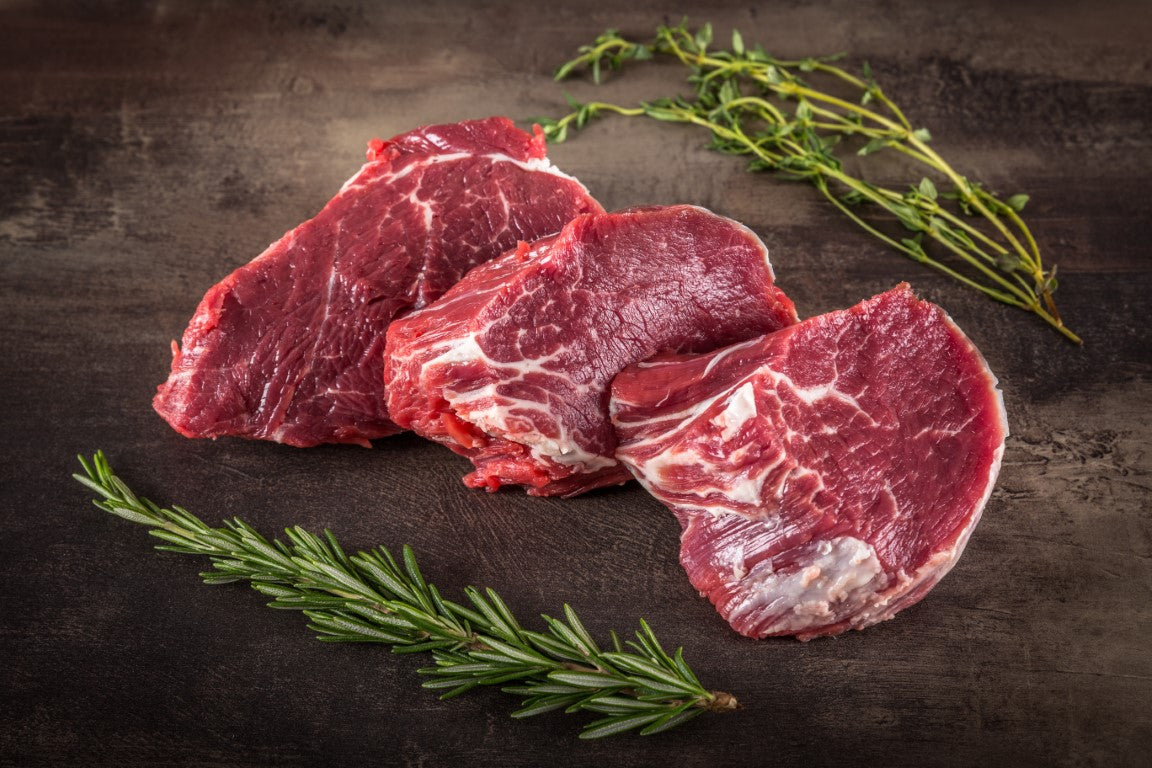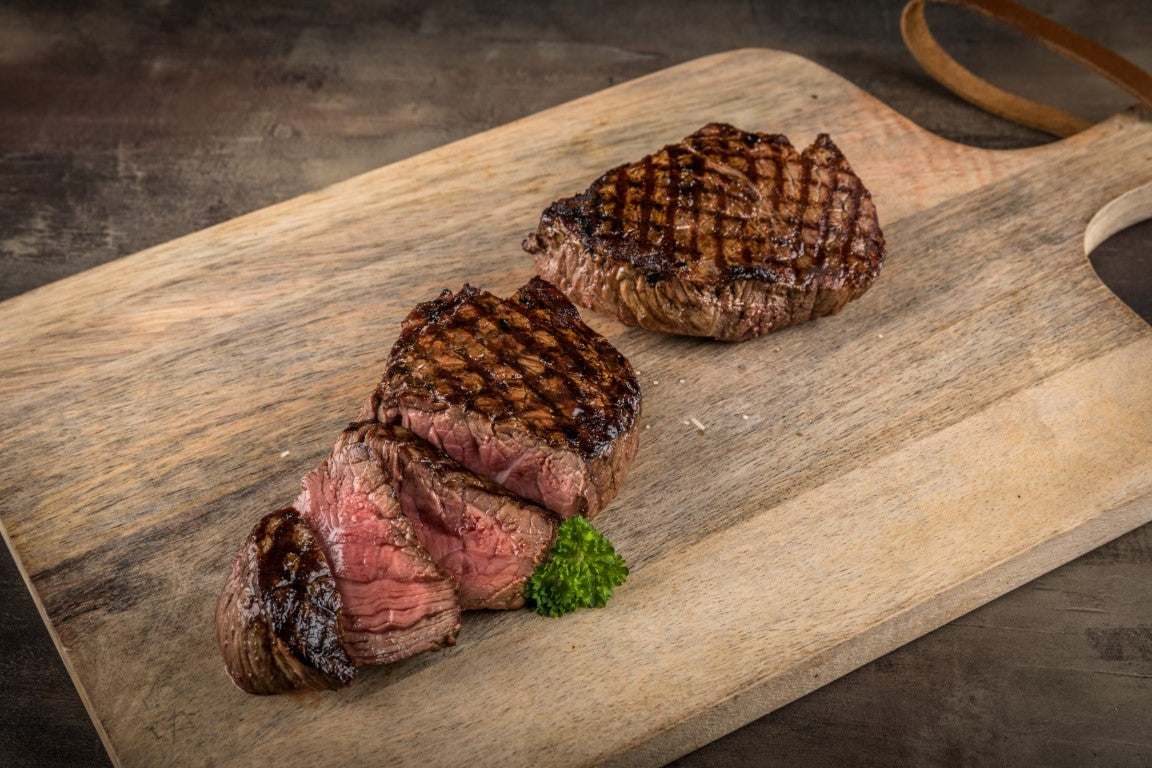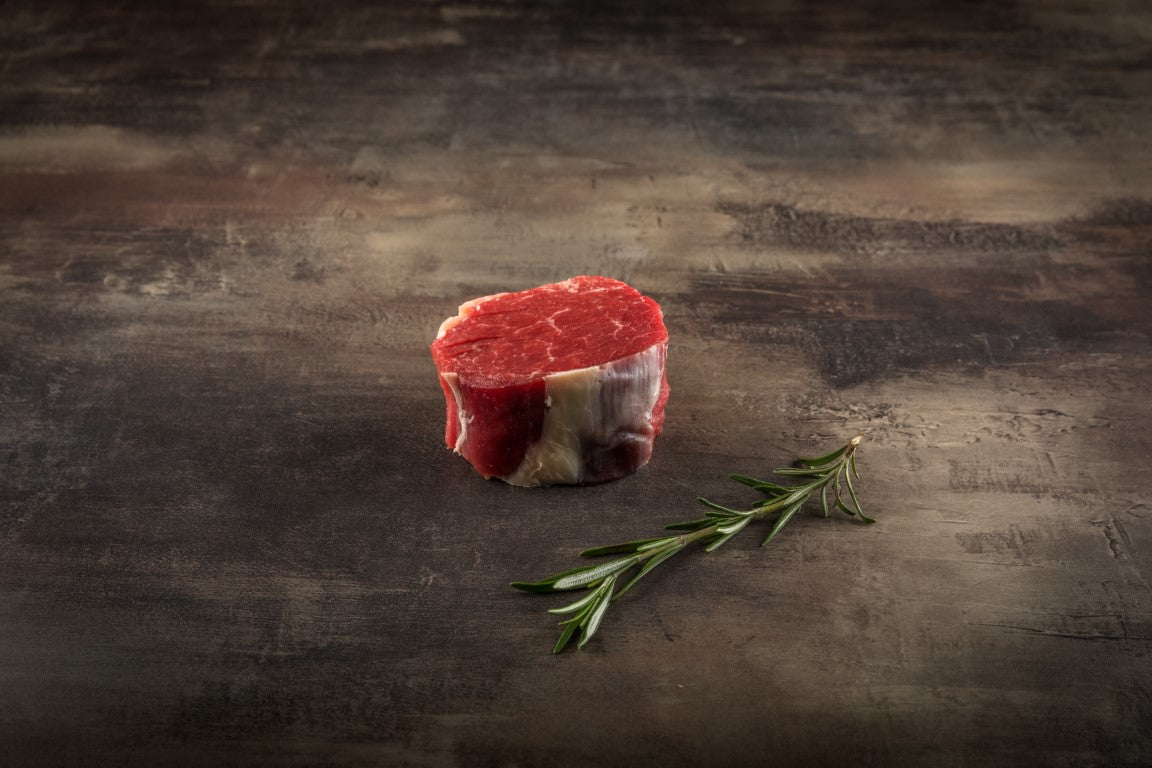Beef fillet steak
Beef fillet is ideal for pan-frying. Without question, it 's one of the best beef steaks. The muscle isn't subjected to much strain, making the fillet extremely tender. The meat is particularly lean and short-fibered .
To ensure the highest quality, we only ship beef fillets that have been dry-aged for at least four weeks. This aging process imparts a slightly nutty flavor and makes the fillet extremely tender.
Through our own breeding and slaughtering, we influence the species-appropriate animal husbandry and thus the meat quality at all points.

The properties of the beef fillet
The beef fillet , or sirloin , is one of the least used muscles. It runs parallel to the inside of the spine. The thin part of the fillet, the tip, points toward the head of the cow, while the thick part, the fillet head, points toward the back. A cow has two sirloin muscles, weighing 3-5 kg, which accounts for approximately 1.5% of the total meat weight and is the most expensive cut of beef.
Incidentally, the fillet is also called lung roast in Austria.
Raising our cattle
When you buy beef fillet steaks from us, you're getting meat from our own livestock and those of our partners, without exception. All farms are located near our butcher shop in the Black Forest. The animals are raised exclusively on farm-grown feed. Our short transport routes protect the livestock and the environment. We transport the animals a maximum of 50 km from the farm to our butcher shop. A gentle and stress-free slaughter process at our facility is an important component of the quality of our steaks.
Dry-aged beef – quite normal for us
Aging meat on the bone is a tradition we uphold in our butcher shop. We exclusively dry-age our beef steaks. The loss of moisture allows the meat to retain its exceptional juiciness after cooking, enhancing its natural, robust flavor.
Preparation of beef fillet steak
How to prepare beef fillet steak on the grill – in 6 steps
It's important that the grill has a lid. Preparation:
- Prepare two zones on the grill: 1st zone: High heat; 2nd zone: Indirect heat.
- Remove the steak from the refrigerator, season with salt, and place it in the hot zone. Grill it on all sides to create a crispy crust.
- Place the steak in the indirect zone and reduce the heat in the hot zone.
- Insert the core temperature probe into the steak.
- When the steak reaches the desired core temperature, remove it from the grill and let it rest for 2-3 minutes.
- Carve the steak across the grain and serve on warmed plates.
How to cook beef fillet steak in a pan – in 5 steps
The technique is similar to grilling. Preparation:
- Preheat pan without oil to maximum heat, preheat oven to 120 °C.
- Remove the steak from the refrigerator, season with salt, and add 1 tablespoon of oil to the pan. Sear the steak on all sides to create a roasted flavor.
- Place the steak in the oven and insert the core temperature probe.
- When the steak reaches the desired core temperature, remove it from the oven and let it rest for 2-3 minutes.
- Carve the steak across the grain and serve on warmed plates.
Measuring the core temperature of the beef fillet steak
For precise cooking, we recommend using a digital probe thermometer. To accurately measure the core temperature , insert the probe into the center of the meat.
Core temperature of beef fillet steak
The core temperature is a matter of taste. Our recommendation:
* Our core temperature recommendation for beef fillet steaks: 54 °C
| Designation | Description | core temperature |
|---|---|---|
| Blue | Roasted on the outside, cool and raw on the inside | 42 °C |
| Rare / Bloody | Very reddish in the core | 48-52 °C |
| Medium-Rare | Slight discoloration, still strongly reddish | 52-56 °C |
| medium | Clear color change, red tone still visible | 56-60 °C |
| Well Done / Through | Meat almost completely recolored | 60-64 °C |








 Aus eigenem & Partner Viehbestand
Aus eigenem & Partner Viehbestand Dienstags und Donnerstags Versandtag
Dienstags und Donnerstags Versandtag

